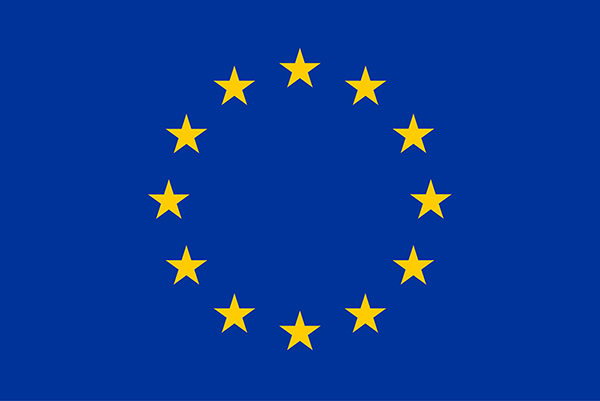Simulator for guidance, navigation and control of proximity orbital operations.
You need to have previously installed ROS2. Please follow this guide if you don't have it.
source /opt/ros/humble/setup.bashCreate workspace and clone the repository
mkdir ~/ros2_ws/src
cd ~/ros2_ws/src
git clone https://github.com/IntelligentRoboticsLabs/GNC_orbital.gitInstall dependencies and build workspace
cd ~/ros2_ws
sudo rosdep init
rosdep update
rosdep install --from-paths src --ignore-src -r -y
colcon build --symlink-install Setup the workspace
source ~/ros2_ws/install/setup.bashTo launch the simulation environment once everything is compiled, we must use the following command:
source /opt/ros/humble/setup.bash
source ~/ros2_ws/install/setup.bash
ros2 launch gnc_orbital ur_sim_control.launch.pyOnce launched, the rviz viewer with both arms, camera and rail, and the gazebo simulation environment should open.
If what you want is for the rviz or gazebo viewer not to open, use one of these two commands or a combination of both:
ros2 launch gnc_orbital ur_sim_control.launch.py launch_rviz:=false
ros2 launch gnc_orbital ur_sim_control.launch.py gazebo_gui:=falseTopics
Once the simulation is launched, you can use the ros2 topic list command to obtain the following result:
/clicked_point
/clock
/dynamic_joint_states
/goal_pose
/initialpose
/joint_state_broadcaster/transition_event
/joint_states
/parameter_events
/performance_metrics
/robot_description
/rosout
/tf
/tf_static
/ur10_camera/camera_info
/ur10_camera/depth/camera_info
/ur10_camera/depth/image_raw
/ur10_camera/depth/image_raw/compressed
/ur10_camera/depth/image_raw/compressedDepth
/ur10_camera/depth/image_raw/theora
/ur10_camera/image_raw
/ur10_camera/image_raw/compressed
/ur10_camera/image_raw/compressedDepth
/ur10_camera/image_raw/theora
/ur10_camera/points
/ur10_joint_state_broadcaster/transition_event
/ur10_joint_trajectory_controller/controller_state
/ur10_joint_trajectory_controller/joint_trajectory
/ur10_joint_trajectory_controller/state
/ur10_joint_trajectory_controller/transition_event
/ur3_joint_state_broadcaster/transition_event
/ur3_joint_trajectory_controller/controller_state
/ur3_joint_trajectory_controller/joint_trajectory
/ur3_joint_trajectory_controller/state
/ur3_joint_trajectory_controller/transition_eventYou have the topics for each of the robots, where you can see the status of each of the joints of each arm, or the image from the camera that the ur10 has. Additionally, you will be able to see all the transforms in /tf or /tf_static
Actions
Once the simulation is launched, you can use the ros2 action list command to obtain the following result:
/ur10_joint_trajectory_controller/follow_joint_trajectory
/ur3_joint_trajectory_controller/follow_joint_trajectoryThese are the actions that moveit2 will use to be able to move the arms
In the file params/world_params.yaml you will find the world configurations, including the spotlights.
world_params.yaml
# Spotlight 1
## Pose
spot1_x_light: 0.0
spot1_y_light: 0.0
spot1_z_light: 1.2
spot1_roll_light: 0.0
spot1_pitch_light: 1.56
spot1_yaw_light: 0.78
## Diffuse
spot1_R_light: 1
spot1_G_light: 1
spot1_B_light: 1
spot1_opacity_light: 1.0
## Specular
spot1_specular_R: 1
spot1_specular_G: 1
spot1_specular_B: 1
spot1_specular_opacity: 1.0
## Attenuation
spot1_attenuation_range: 30
spot1_attenuation_linear: 1
spot1_quadratic: 0.001
## Spot
spot1_inner_angle: 0.1
spot1_outer_angle: 0.2
spot1_fall_off: 0.5
# Spotlight 2
## Pose
spot2_x_light: -2.0
spot2_y_light: 0.0
spot2_z_light: 1.2
spot2_roll_light: 0.0
spot2_pitch_light: 1.56
spot2_yaw_light: 2.53
## Diffuse
spot2_R_light: 1
spot2_G_light: 1
spot2_B_light: 1
spot2_opacity_light: 1.0
## Specular
spot2_specular_R: 1
spot2_specular_G: 1
spot2_specular_B: 1
spot2_specular_opacity: 1.0
## Attenuation
spot2_attenuation_range: 30
spot2_attenuation_linear: 1
spot2_quadratic: 0.001
## Spot
spot2_inner_angle: 0.1
spot2_outer_angle: 0.2
spot2_fall_off: 0.5Parameters to take into account:
- To change the color of the spotlights, you have to modify the diffuse and specular RGB values, which range from 0 to 1.
- To modify the light range, you have to modify the spotlight's attenuation_range value.
- To modify the angle by which the light extends, you must touch the outer_angle value. This value cannot be less than the inner, so if a smaller angle is necessary, both will have to be modified.
- You can also modify the position of the spotlights and the angle at which the light goes, by touching the xyz rpy parameters.
- The parameters attenuation_linear, quadratic and fall_of are used to configure how the light decreases linearly with distance.
The configuration of the arms is located in params/arms_params.yaml, and this allows you to modify its position and initial orientation, as well as the name given to it, type of arm and the prefix that will be given to the tf of the arm to differentiate them from another.
arms_params.yaml
gnc_orbital:
arm1:
name: ur3
type: ur3
tf_prefix: ur3_
position: [-2.4, -1.6, 0.73]
orientation: [0, 0, 0]
arm2:
name: ur10
type: ur10
tf_prefix: ur10_
position: [0, -2.89, 1]
orientation: [-1.56, 0, 0]It must be taken into account that if the table arm is going to be moved, the position of this table must also be modified. You can also do this from the params/world_params.yaml file
world_params.yaml
# UR 5 Table
## Pose
x_table: -2.6
y_table: -1.1
z_table: 0.35
roll_table: 0.0
pitch_table: 0.0
yaw_table: 1.56
## Size
length_table: 1.2
width_table: 0.6
height_table: 0.73In order to move the ur3 robot, you will have to use the following command from terminal:
ros2 topic pub /ur3_joint_trajectory_controller/joint_trajectory trajectory_msgs/msg/JointTrajectory "header:
stamp:
sec: 0
nanosec: 0
frame_id: ''
joint_names: ['ur3_shoulder_pan_joint', 'ur3_shoulder_lift_joint', 'ur3_elbow_joint', 'ur3_wrist_1_joint', 'ur3_wrist_2_joint', 'ur3_wrist_3_joint']
points: [{positions: [0.0, -1.57, 1.57, 0.0, 0.0, 0.0],
time_from_start: {sec: 2, nanosec: 0}}]"In order to move the ur10 robot, you will have to use the following command from terminal:
ros2 topic pub /ur10_joint_trajectory_controller/joint_trajectory trajectory_msgs/msg/JointTrajectory "header:
stamp:
sec: 0
nanosec: 0
frame_id: ''
joint_names: ['ur10_shoulder_pan_joint', 'ur10_shoulder_lift_joint', 'ur10_elbow_joint', 'ur10_wrist_1_joint', 'ur10_wrist_2_joint', 'ur10_wrist_3_joint', 'ur10_rail_joint']
points: [{positions: [0.0, -1.57, -1.57, 0.7, 1.5, -1.2, -1.1],
time_from_start: {sec: 2, nanosec: 0}}]"If what you want is to see the image or the pointcloud generated by the camera, or the transform system, you should go to Rviz and follow the following steps:
- Transforms:
Add > By display type > TF - RGB image:
Add > By topic > /ur5_camera > /image_raw > Image - Depth image:
Add > By topic > /ur5_camera > /depth > /image_raw > Image - PointCloud:
Add > By topic > /ur5_camera > /points > PointCloud2
In this demo the commands given above are being executed, only modifying the positions of the joints:
demo_1.webm
demo2.webm
This is a project made by the Intelligent Robotics Lab, a research group from the Universidad Rey Juan Carlos. Copyright © 2024.
Maintainers:
Grant TED2021-132099B-C32 funded by MCIN/AEI/10.13039/501100011033
and by "European Union NextGenerationEU/PRTR".



